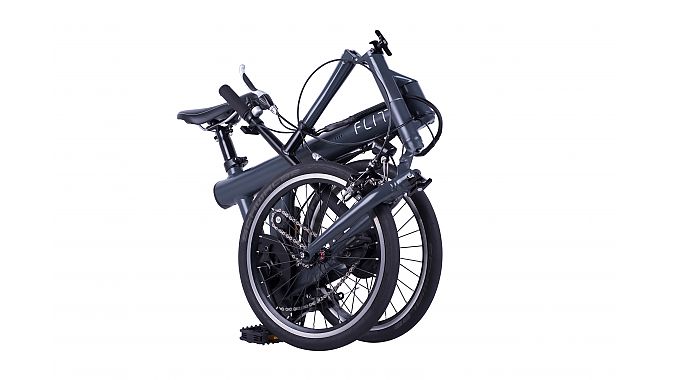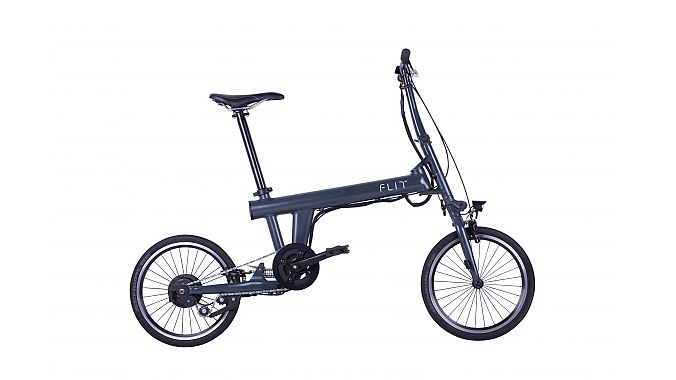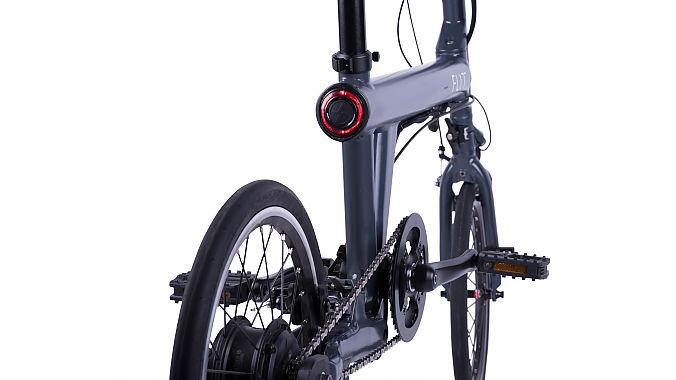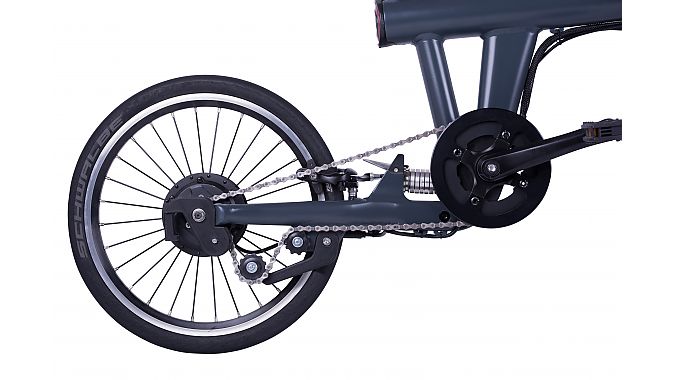CAMBRIDGE, United Kingdom (BRAIN) — Dave Henderson was ahead of his time. At age 15 in 2002, he built his first e-bike, using a motor from a car radiator fan and a lead-acid battery. That further sparked interest in electric vehicles and culminated with an engineering degree and eventually employment at Jaguar Land Rover in the United Kingdom.
About a year later, with that interest intensifying, Henderson left JLR to further study automobile engineering at Tsinghua University in Beijing in 2015. Befriending Alex Murray, they returned to Cambridge, England, with a goal: design and market a comfortable e-bike that easily could be carried and stowed.
The result is quite a bit more refined from that first e-bike.
The Flit-16 is a 30.8-pound foldable commuter e-bike with a custom elastomer suspension and a 41.7-inch wheelbase to smooth out the ride. Once folded, it can be carried or rolled on its back wheel, where the hub motor is located. A removable 250 watt-hour lithium-ion battery is built into the frame's top tube, with a single charge lasting 30 miles. The suspension design features elastomer discs sandwiched between aluminum discs to prevent overheating.
"Our bike folds small but retains a great ride," said Murray, Flit co-founder and managing director. "It's lightweight but is still durable, and it's clean design aesthetic matches the minimalist style popular among city professionals."
The crowdfunding campaign begins on Kickstarter Tuesday. The e-bike is available for preorder through Sept. 7 for 1,250 pounds ($1,527), saving 1,000 pounds ($1,238) on the retail price. The goal is 25,000 pounds ($30,500). When the campaign ends, the Flit-16 will be available online through Indiegogo InDemand until the Kickstarter supply is delivered, Murray said, who added it's too early to say if and when a dealer network will be built.
"At the moment, we are considering a number of different business models once we have finished the campaign and built an online community," Murray said.
Murray was studying public policy at Tsinghua University with an interest in electric vehicles and how transportation polices differed in developed versus emerging economies. After meeting Henderson, "we quickly realized that we were interested in the same things but from different angles," Murray said.
The Flit team will attend Eurobike, which named it a Start-Up Award finalist, to talk to bike retailers. The majority of the company is owned by Henderson and Murray, with a smaller proportion by a group of Cambridge-area investors.
Flit partnered with a Taiwanese manufacturer with more than 30 years of experience in the industry. "It helps that Dave speaks fluent Mandarin, and so he can chat easily from everyone from the guys on the assembly line to the boss when he's over there to supervise prototyping or manufacturing setup," Murray said.
What further sets the Flit-16 apart, according to Murray, is the dual-side torque sensor. With most of the rider weight over the rear wheel, the motor runs at maximum torque. This results in better traction, higher acceleration and "a more natural push rather than a pull feeling to the assistance."
Marketing so far has centered on test-ride demos across the UK, exposing more than 300 people to the bike in the past two months, Murray said. Further awareness will come from social media with Facebook being the primary channel but including Twitter, Instagram, LinkedIn and YouTube.
"We think that folding bikes present a great opportunity for creative POS (point of sale) in bike shops," Murray said. "We will be exploring this further once the campaign has finished."










